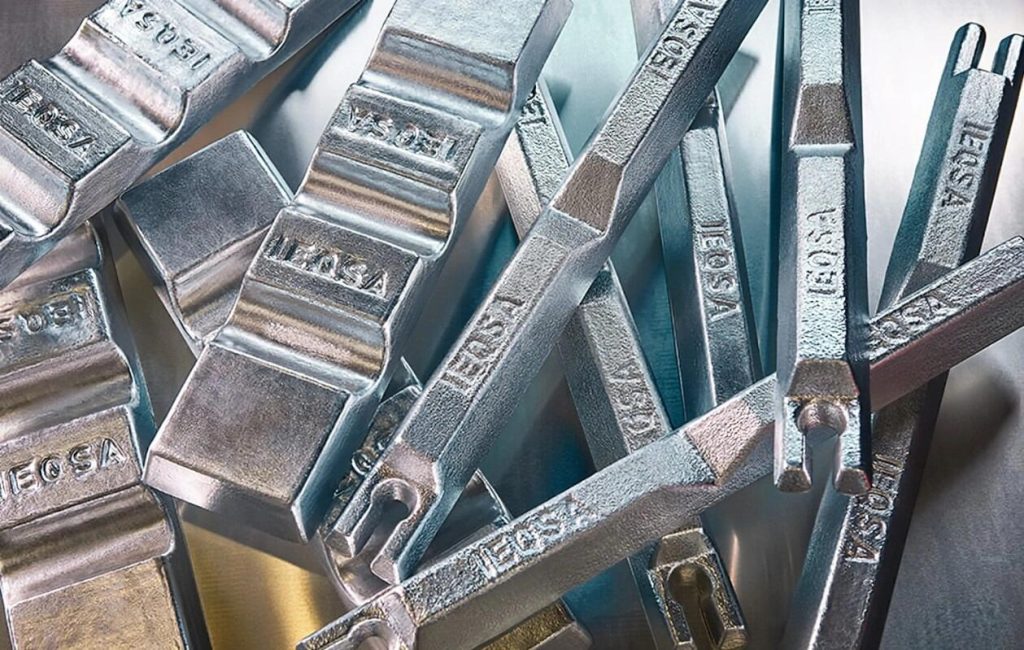一、Raw Material Preparation
Selection of Metal Materials: The manufacturing of hardware tools usually involves various metal materials. For example, carbon steel is a commonly used basic material. It is relatively inexpensive and has good strength, suitable for manufacturing some tools that require high hardness, such as ordinary wrenches. Alloy steel is used to manufacture high-quality and high-performance tools. For instance, chromium-vanadium steel is used to make high-quality wrenches because it contains alloy elements such as chromium and vanadium, which can improve the toughness, wear resistance, and corrosion resistance of the tools. Stainless steel materials are mainly used to manufacture tools that need to be rust-proof, such as kitchen knives and bathroom hardware. They contain elements such as chromium and nickel, making the tools less likely to rust in humid environments.
Inspection and Treatment of Materials: Before the materials are put into production, they need to undergo strict inspection. This includes checking the physical and chemical properties such as hardness, toughness, and purity of the materials to ensure that they meet the production requirements. For example, the hardness of metal materials is detected by hardness testing equipment to see if it is within the specified range. For some defective materials, such as those with cracks or excessive impurities, they need to be screened and processed. The materials also need to be pre-treated, such as being cut into appropriate sizes for convenient subsequent processing operations.

二、Processing Techniques
1、Forging Process
Open Die Forging: It is suitable for manufacturing some hardware tools with simple shapes and large sizes, such as large hammers. The metal billet is placed on the anvil of the forging equipment (such as an air hammer or a friction press), and through repeated strikes by the upper and lower anvils, the billet is gradually deformed into the desired shape. This method has high flexibility, but the production efficiency is relatively low, and it requires relatively high operating skills from the workers.
Closed Die Forging: For tools with complex shapes and high precision requirements, such as some special-shaped wrenches, closed die forging is an effective method. The heated billet is placed into a pre-made die cavity, and pressure is applied by a press, so that the billet is formed within the die. Closed die forging can produce products with precise shapes and consistent sizes, and has a relatively high production efficiency, but the die cost is high.

2、Casting Process
Sand Casting: This is one of the most common casting methods, suitable for manufacturing various parts of hardware tools, such as tool handles. First, a sand mold with a shape opposite to that of the part is made, and the molten metal liquid (such as aluminum alloy) is poured into the sand mold. After the metal liquid cools and solidifies, the sand mold is broken to take out the casting. Sand casting has the advantages of low cost and simple process, but the precision of the casting is relatively low, and the surface quality may be poor.
Investment Casting: It is used to manufacture high-precision and complex-shaped hardware parts. First, a pattern made of wax or plastic is made, and then multiple layers of refractory materials are coated on the surface of the pattern to form a hard shell. Then, the pattern is melted or dissolved away to obtain a hollow shell, and finally, the metal liquid is poured into the shell, and after cooling, the casting is obtained. Investment casting can produce parts with high dimensional precision and smooth surfaces, but the process is complex and the cost is high.

3、Cutting Processing Technique
Turning Processing: It is mainly used to manufacture shaft-like and rod-like parts of hardware tools, such as the shaft of a screwdriver. The workpiece is fixed on the chuck of the lathe, and through the rotation of the spindle of the lathe, the workpiece rotates. The tool cuts along the axial or radial direction of the workpiece, thereby processing various shapes of surfaces, such as cylindrical surfaces and conical surfaces. Turning processing can ensure the dimensional precision and surface roughness of the parts, and is a high-precision processing method.
Milling Processing: It is suitable for processing flat surfaces, grooves, gears and other shapes of hardware tools parts. The workpiece is fixed on the workstation of the milling machine, and the milling knife rotates and cuts along the surface of the workpiece. For example, when manufacturing the flat part of a wrench or the dial of a tool, milling processing can be used. By choosing different shapes of milling knives and processing methods, various complex shapes can be processed.
Drilling Processing: It is used to process holes on hardware tools, such as processing installation holes on the head of a wrench or processing holes for installing screws on a measuring tool. A drill bit is used to drill holes on the workpiece on a drill bed or a machining center. When drilling, attention should be paid to controlling the parameters such as the rotation speed and feed rate of the drill bit to ensure the precision and quality of the holes.

三、Surface Treatment
Electroplating Treatment: Electroplating is a common surface treatment method, and its main purpose is to improve the corrosion resistance and aesthetics of hardware tools. For example, a layer of chromium is plated on the surfaces of tools such as wrenches and screwdrivers. The chromium layer has good corrosion resistance and luster, which can prevent the tools from rusting and make them look more shiny. The electroplating process is to take the tool as the cathode in an electrolyte containing metal ions (such as chromium ions), and through the action of direct current, the metal ions are deposited on the surface of the tool to form an electroplating layer.
Coating Treatment: For some hardware tools that do not require high-precision surfaces, such as nails and wires in building hardware, coating is a simple and effective surface treatment method. Spray painting, dip painting and other methods can be used to apply a layer of paint on the surface of the tool, which plays a role in rust prevention and decoration. Before coating, the surface of the tool needs to be cleaned and pre-treated to ensure the adhesion of the paint layer. There are many types of paint, such as anti-rust paint and epoxy paint, and the appropriate paint type can be chosen according to the purpose and use environment of the tool.
Heat Treatment: Heat treatment is mainly to change the internal structure of hardware tools, thereby improving their mechanical properties. For example, quenching and tempering treatments are carried on knives. Quenching is to heat the knife to a certain temperature and then rapidly cool it, which greatly increases the hardness of the knife. However, the toughness of the knife after quenching will be reduced and it is easy to break. Therefore, tempering treatment is needed. The quenched knife is heated to a lower temperature and kept at that temperature for a certain time, and then slowly cooled to reduce the internal stress of the knife and improve its toughness. Through reasonable heat treatment, a good balance of hardness, toughness and other properties of hardware tools can be achieved.

四、Assembly and Quality Inspection
Assembly Process: The assembly of hardware tools needs to be carried out according to the design requirements and process specifications. For example, the assembly of electric tools involves the assembly of multiple components such as motors, gears and shells. During the assembly process, it is necessary to ensure that the positions of each component are accurate and the connections are firm. For some parts that need lubrication, such as the gearbox of an electric tool, an appropriate amount of lubricant should be added to ensure the normal operation of the tool. At the same time, attention should be paid to the order and method of assembly to avoid damage to components or improper assembly that leads to a decline in tool performance.
Quality Inspection: Quality inspection is an important part of hardware tools manufacturing. It includes appearance inspection, dimensional precision inspection, performance inspection and other aspects. Appearance inspection mainly checks whether there are scratches, cracks, sand holes and other defects on the surface of the tool; dimensional precision inspection uses measuring tools such as calipers and micrometers to measure whether the dimensions of the tool meet the design requirements; performance inspection conducts corresponding tests according to the type of tool, such as testing the power, rotation speed, insulation performance of electric tools, and testing the strength, torque of manual tools. Only through strict quality inspection can the quality and safety of hardware tools be ensured.


